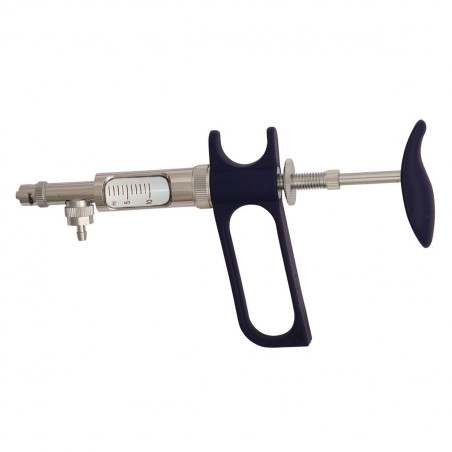Salmonellosis in pigs, which is typically seen during the weaning or finishing phase, may result in clinical disease or in establishment of a carrier state. In a carrier state, Salmonella is shed intermittently in the feces, creating a public health concern as a result of potential pork contamination. Accurate and timely detection of Salmonella is vital to the initiation of appropriate treatment protocols and prevention strategies. Veterinarians commonly question which sample type is best for herd level surveillance of Salmonella in swine herds. Oral fluids, currently widely used for the detection of PRRSV and SIV, are quick and inexpensive to collect. Over-the- shoe booties, while easy to collect, are not currently used as frequently for surveillance of pathogens in the swine industry. Fecal samples are the most commonly used sample for detection of many viruses and bacteria in swine but are more time consuming to collect than the previous two sample types. The goal of this project was to compare the accuracy of oral-fluids and over-the-shoe booties to the current gold standard of fecal sampling for identification of Salmonella using pigs experimentally inoculated with various serotypes of Salmonella.
Five-week old pigs were experimentally infected with 109 CFU of Salmonella via oral gavage and tonsil swab using isolates obtained from clinical samples submitted to the Iowa State University Veterinary Diagnostic Laboratory. Twenty pigs were infected with Salmonella Typhimurium and 20 with Salmonella I 4,[5],12:i:- (2 separate groups with 5 pens, 4 pigs in each pen). Rectal temperatures were taken on all pigs daily until 7 days post-inoculation (PI) then biweekly for the remaining 3 weeks. Samples were collected on days 2, 4, 7, 14, 21 and 28 post-inoculation. Over-the-shoe booties were collected during pen walk-through at each time point, with one pair of booties worn through all pens per infecting serotype. Oral fluids were collected by hanging a rope in each pen of 4 pigs for 30-60 minutes. Fecal samples were collected via digital rectal palpation of each pig. Samples were stored at -80°C from the time of collection until quantification of Salmonella was performed. Salmonella quantification was completed using the standard plate count method on Xylose-Lysine-Tergitol-4 (XLT4) agar. All samples were also enriched in Buffered Peptone Water for 18-24 hours and were then plated to Brilliant Green (BG) agar and XLT4 agar. A subset of colonies for each sample characteristic of Salmonella, black on XLT4 agar and red on BG agar, were confirmed as Salmonella using MAL- DI-TOF-MS.

The median temperatures of pigs peaked on day two post-inoculation at 39.3ºC and returned to near baseline levels by day five PI at 38.5 ºC. Average Salmonella quantities in the feces peaked at day two PI at 8.04 × 104 CFU/mL. Salmonella was still detectable in the feces from enrichment at 28 days PI. From oral fluids, average Salmonella quantities peaked at day 3 PI at 5.6 × 102 CFU/ mL. Salmonella was no longer detectable from oral fluids past day seven PI. Over-the-shoe booties were only sporadically positive throughout the testing period, with the highest average level of Salmonella detected being only 100 CFU/mL at day 4 PI. Salmonella was only detectable from the booties through day four PI. Selection of the most appropriate sample type is important for proper surveillance of pathogens. Over-the-shoe booties proved to be an unacceptable sample type to detect Salmonella given that booties positive for Salmonella were not reflective of the level of disease nor were they consistently positive. Oral fluids would be an acceptable sample type for detection but only during the acute phase of a Salmonella outbreak when Salmonella levels are the highest. Enrichment of those oral fluid samples would be recommended to ensure there is adequate Salmonella for detection through culture.
Although feces is the most time-consuming to collect, it should remain the gold standard for Salmonella detection as the fecal samples were most reflective of the level of disease as indicated by the rectal temperatures in addition to having the highest levels of Salmonella for the longest amount of time post-infection.
S. Naberhaus, A. Krull, B. Arruda, P. Arruda, D. Magstadt, F. Matias Ferreyra, Honorato Gatto, H. Meiroz de Souza Almeida, A. Kreuder. Comparison of pathogenic Salmonella spp. detection from porcine oral fluids, over-the-shoe booties, and fecal samples. 49 th Annual Meeting of the American Association of Swine Veterinarians (March 3-6, 2018)



 pads. All samples were analyzed via a standard bacteriological technique for Salmonella and suspicious colonies were identified with respect to serotype.
pads. All samples were analyzed via a standard bacteriological technique for Salmonella and suspicious colonies were identified with respect to serotype.

